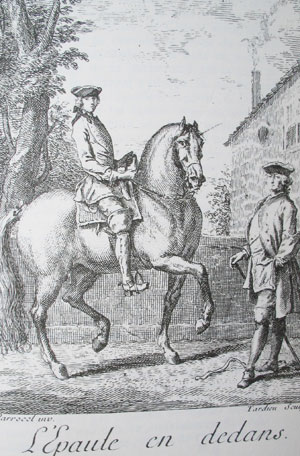I prefer to keep things simple; SI is SI is 3 tracks. What I believe people are referring to as a 4 track SI is really LY done against the rail, maybe with varying degrees of flexion. That doesn’t take away from any gymnastic benefit, it just helps communication via a common vocabulary.
This conversation reminds me of a time when I went into a restaurant for breakfast, ordered eggs over easy only to have the waitress warn me that at that place “over easy” meant the yokes were cooked hard. She suggested that what I wanted was “sunny side up”; I went with scrambled.
Totally agree that the entire point of dressage is to gymnasticize the horse. Well, that and to bankrupt and frustrate the rider but I digress.


